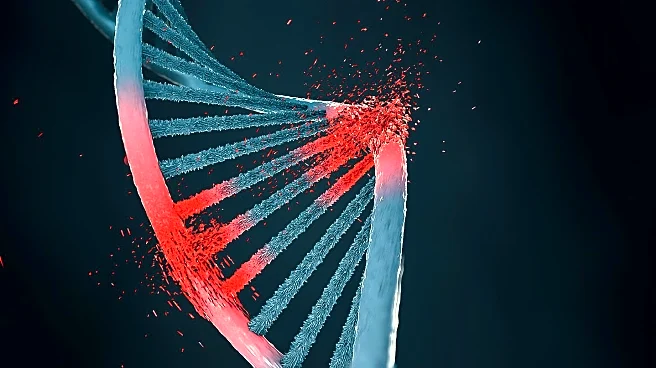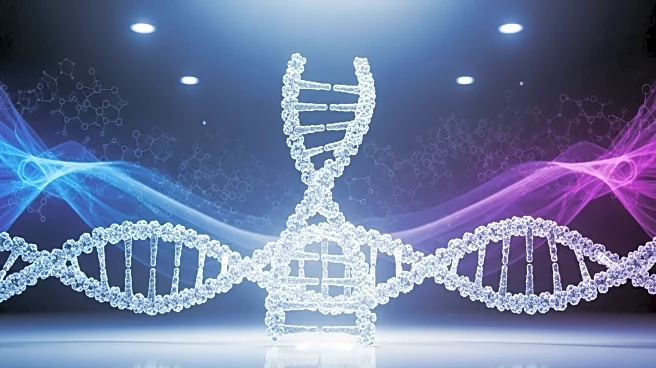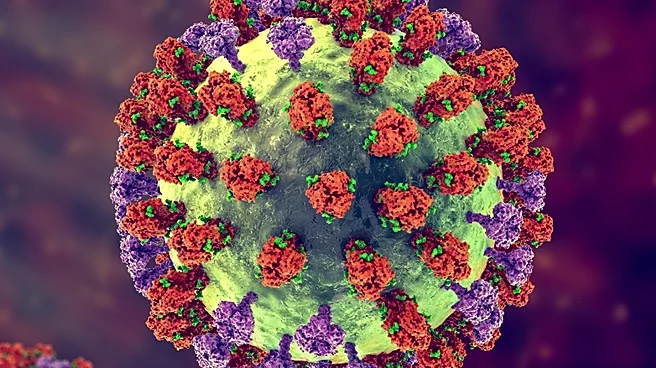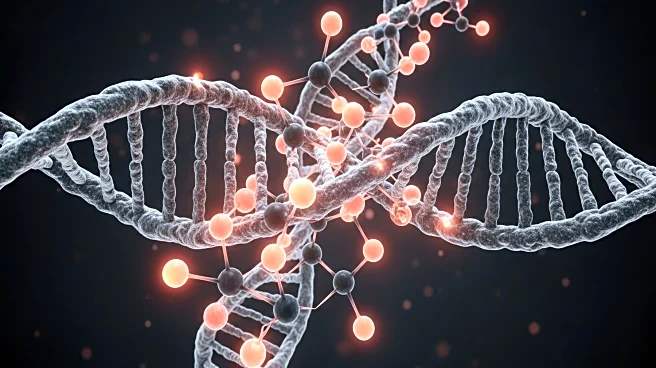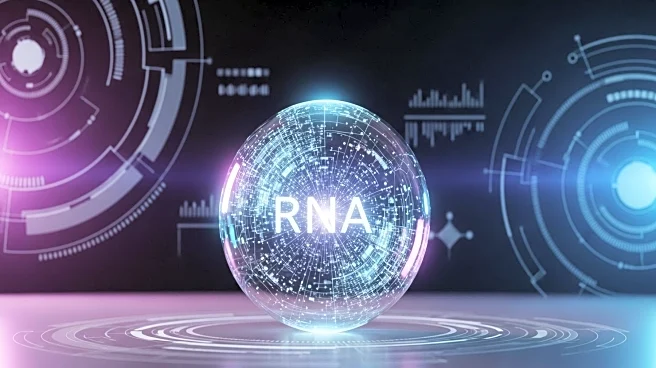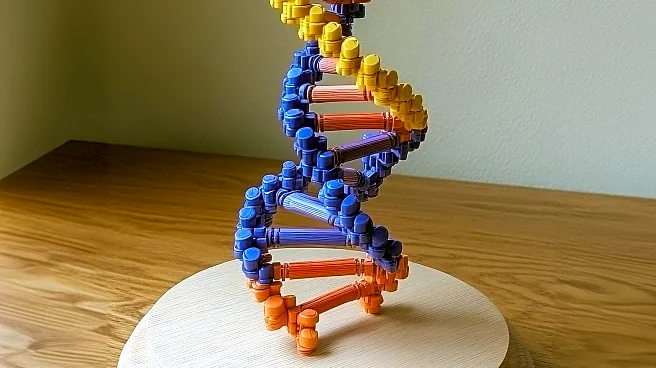What is the story about?
What's Happening?
Recent research has revealed the molecular mechanism behind the dimerization of Toll-like receptor 3 (TLR3) in endosomes, which is crucial for innate immune activation. The study demonstrates that self RNA Rmrp binds directly to TLR3, inducing its dimerization in early endosomes. This interaction is specific to TLR3 and does not involve other endosomal or cytoplasmic RNA sensors. The cryo-EM structure of the Rmrp-TLR3 complex shows a unique conformation distinct from the activation by dsRNA. The K42 residue of TLR3 is essential for binding to Rmrp, and the dissociation of Rmrp following endosomal acidification primes TLR3 for antiviral responses. The findings highlight the role of subcellular localized self RNAs in enhancing innate immune activation.
Why It's Important?
Understanding the mechanism of TLR3 dimerization is significant for advancing knowledge in immunology and developing therapeutic strategies. TLR3 plays a vital role in antiviral responses, and its efficient activation can enhance the body's ability to combat viral infections such as influenza A. The study provides insights into how self RNAs can modulate immune responses, potentially leading to new approaches in treating viral diseases. Additionally, the research may inform the development of drugs targeting TLR3, offering new avenues for boosting immune function in patients with compromised immunity.
AI Generated Content
Do you find this article useful?


